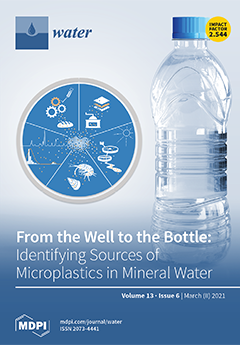Actual evapotranspiration (ET
a) estimations in arid regions are challenging because this process is highly dynamic over time and space. Nevertheless, several studies have shown good results when implementing empirical regression formulae that, despite their simplicity, are comparable in accuracy to more
[...] Read more.
Actual evapotranspiration (ET
a) estimations in arid regions are challenging because this process is highly dynamic over time and space. Nevertheless, several studies have shown good results when implementing empirical regression formulae that, despite their simplicity, are comparable in accuracy to more complex models. Although many types of regression formulae to estimate ET
a exist, there is no consensus on what variables must be included in the analysis. In this research, we used machine learning algorithms—through implementation of empirical linear regression formulae—to find the main variables that control daily and monthly ET
a in arid cold regions, where there is a lack of available ET
a data. Meteorological data alone and then combined with remote sensing vegetation indices (VIs) were used as input in ET
a estimations. In situ ET
a and meteorological data were obtained from ten sites in Chile, Australia, and the United States. Our results indicate that the available energy is the main meteorological variable that controls ET
a in the assessed sites, despite the fact that these regions are typically described as water-limited environments. The VI that better represents the in situ ET
a is the Normalized Difference Water Index, which represents water availability in plants and soils. The best performance of the regression equations in the validation sites was obtained for monthly estimates with the incorporation of VIs (R
2 = 0.82), whereas the worst performance of these equations was obtained for monthly ET
a estimates when only meteorological data were considered. Incorporation of remote-sensing information results in better ET
a estimates compared to when only meteorological data are considered.
Full article





